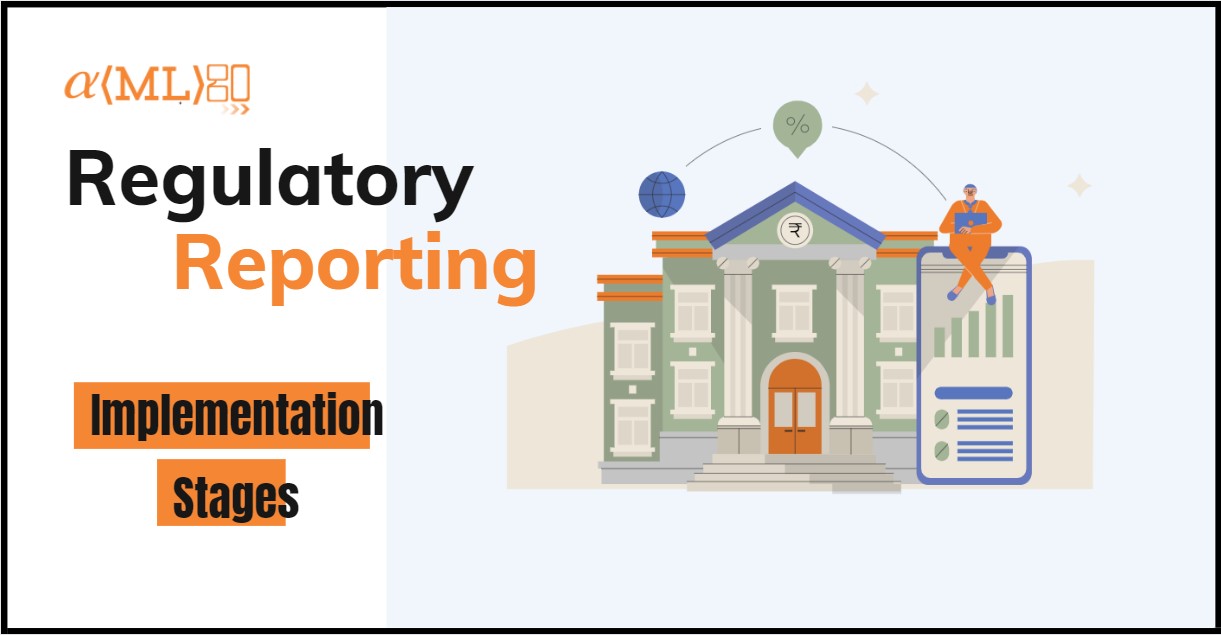
In the last blog, we discussed what is Financial Regulatory Reporting and its importance in the banking industry. Regulatory Reporting comprises the submission of business numbers as required by regulators to evaluate and track the financial and operational status of financial institutions and their compliance with required regulatory provisions.
Whenever a Regulator brings in new requirements, banks have to go through various stages to finally deliver what the Regulators are asking for.
Let’s go through various stages of implementing new regulatory requirements.
Interpretation of new rules:
Reviewing and establishing what the regulation means for the firm, translating the regulatory requirements into IT requirements, any associated staff training, and validation processes. Scoping needs to be done at this stage. We need to understand the regulatory rules and guidelines as well as identify interdependencies with other major regulations. We have to assess the impact of the rules on our strategic priorities and operations.
Data Preparation:
Sourcing and integrating data from different systems and reviewing for completeness and accuracy. Identifying stewardship of data and the Frequency of data required is also important. The top challenges for banks are:
1. Data availability
2. Data quality
3. Infrastructure and IT capability
| Fig 1: Stages of New Regulatory Reporting Implementation |
Report Production:
Transforming data by applying the appropriate calculations and business rules, checking for and resolving errors, and aggregating data to input data to each reporting cell in templates before signing off the report for submission. Banks can use third-party tools like AxiomSL, OneSumX, or any in-house tool for Report production purposes.
Communication:
Transforming reports into the format required for submission and sending the output to regulators. Sometimes the Regulators ask to send granular data in XML, XBRL, or in Excel Sheets. Gabriel is the FCA’s online system for collecting and storing regulatory data from firms while OSCA (The online statistical collection application) is used by reporting institutions to submit statistical data to the Bank of England.
Queries:
Handling both internal queries prior to submission as well as queries received from regulators after submission. Banks need to reply to any ad-hoc queries by regulators as well as internal assessment bodies. So the Regulatory team always need to be prepared to furnish data point in a stipulated time period.
Regulatory reporting is an ongoing process where banks need to interact with their counterparts and submit qualitative, accurate data with timeliness.
Amlgo Labs is an advanced data analytics and decision sciences company based out in Gurgaon and Bangalore, India. We help our clients in different areas of data solutions including the design/development of end-to-end solutions (Cloud, Big Data, UI/UX, Data Engineering, Advanced Analytics, and Data Sciences) with a focus on improving businesses and providing insights to make intelligent data-driven decisions across verticals. We have another vertical of business that we call – Financial Regulatory Reporting for (MAS, APRA, HKMA, EBA, FED, RBI, etc) all major regulators in the world and our team is specialized in commonly used regulatory tools across the globe (AxiomSL Controller View, OneSumX Development, Moody’s Risk, IBM Open Pages, etc). We build innovative concepts and then solutions to give an extra edge to the business outcomes and help to visualize and execute effective decision strategies. We are among the top 10 Data Analytics Start-ups in India, in 2019 and 2020.
